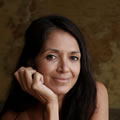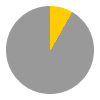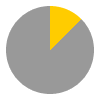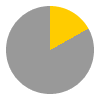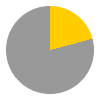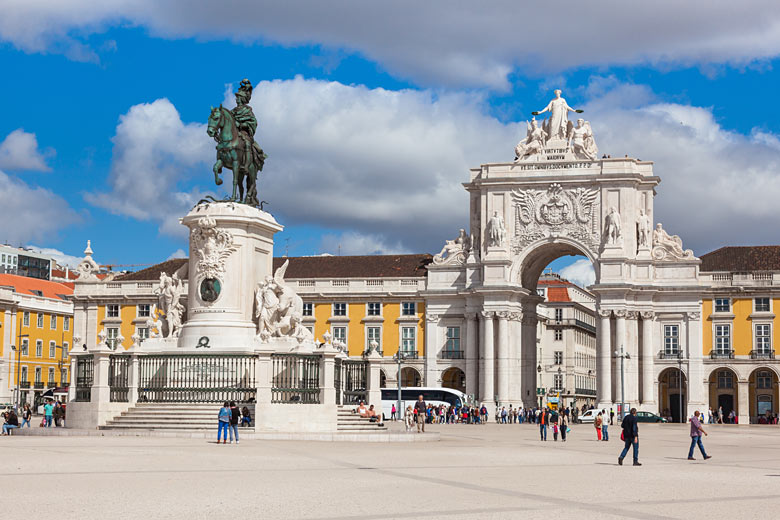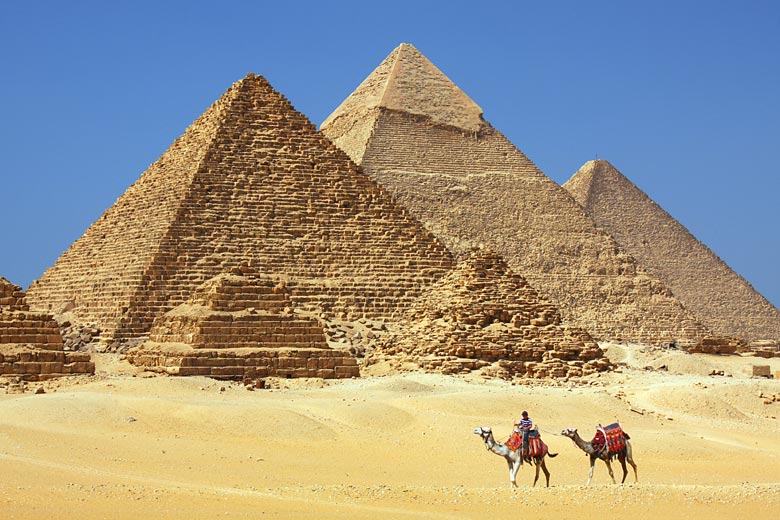How to get the most from a long weekend in Sofia, Bulgaria
Too many people land in Bulgaria's capital and head straight to the country's mountains, in winter, or its beachside resorts, in summer.
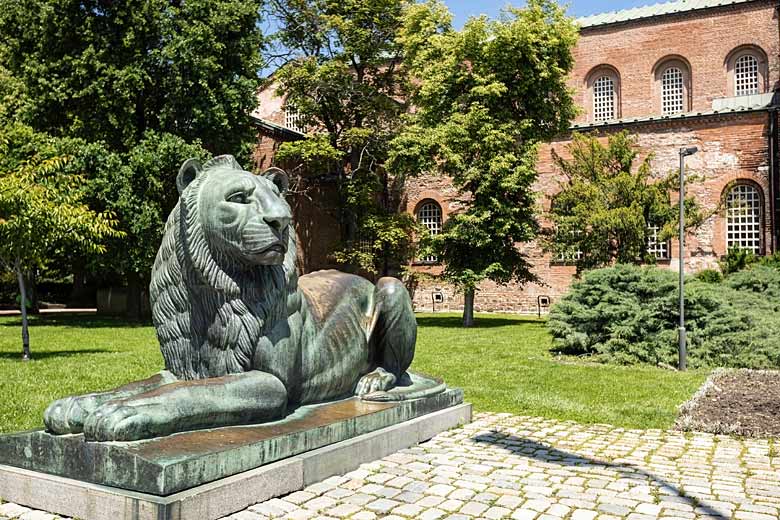
Even if one of these is your ultimate destination, it's worth setting aside a few days to explore Sofia*, where the relics of its Soviet past, set against a background of grand religious edifices, can still be seen.
Getting to Sofia: browse current online deals on city breaks with easyJet holidays*, combining flights and accommodation in one.
Enjoy some quiet in one of Sofia's churches
Sofia's skyline bulges with domes and bristles with spires: you could be forgiven for thinking that it has more churches than cafés. St Alexander-Nevsky Cathedral, with its many domes, variously golden and verdigris, is undoubtedly the star attraction here, but its opulent exterior is just the beginning.
Step inside, and the ornately tiled floor spreads out in an endless pattern, dimly lit by huge chandeliers and flickering prayer candles, while religious frescoes cover almost every inch of the walls and soaring, curved ceilings.
Other religious buildings are less obvious, some located unassumingly down narrow streets or on small squares. The St Sofia Basilica is one of Sofia's oldest: dating back to the 4th century, its intricately mosaiced floors lie above an ancient necropolis.
Near the Banya Bashi Mosque and the Ottoman-era St Petka Church, you'll find the ruins of ancient Roman temples, while the Square of Tolerance showcases all four of Bulgaria*'s primary religions, Orthodox Christian, Muslim, Roman Catholic and Judaism, within a few minutes' walk of each other.
Religious beliefs aside, making time to simply sit and admire the beauty of the interiors is highly recommended.
Learn about Sofia's complex past
Central Sofia's bathhouse culture is, sadly, a thing of the past (although spa complex Koralite is about a 20-minute drive away). Closer in, you can find traces of this history at Sofia's Regional History Museum, which is housed in a former bath complex, complete with elaborately tiled floors.
From the outside, its striking striped façade and elegantly arched windows are worth pausing by, as is the fountain, which spurts mineral waters with which locals fill their bottles.
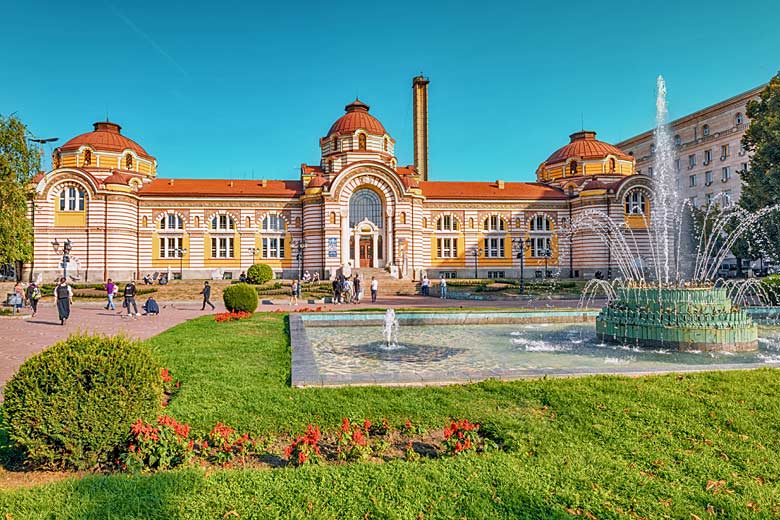
Venture inside, and you'll find eight separate halls, each arranged according to a theme: Links with European Dynasties, State and Municipal Institutions, and Sofia Home and Clothing, among others.
In all, you can see around 120,000 objects, some of which date from as far back as 6,000 BCE. From archaeological artefacts, bicycles and wedding dresses, to the splendour of the carriage once used by Bulgaria's King Ferdinand, this is a fascinating place in which to spend a few informative hours.
Museum hop between impressive collections
The Regional History Museum is not, of course, the only institution worth visiting in Sofia. For art lovers, both the National Art Gallery and The National Gallery are a must, the former in what was once a royal palace and showcases Bulgarian works from the Middle Ages to the present day.
The National Gallery showcases international art, including from artists such as Matisse and Renoir, as well as Bulgarian works.
There's also the National Museum of Military History, full of uniforms, medals and weapons, as well as the National Archaeological Museum, where artefacts from antiquity are on display.
Mull over a controversial statue
Occupying the space where Lenin once loomed, the city is now presided over by a statue of Saint Sofia, which was erected in 2000.
Interestingly, even though the fall of Communism was welcomed by the majority of the population, this statue has always been wreathed in controversy, with reasons for disapproval ranging from inappropriate sensuality to outright paganism.
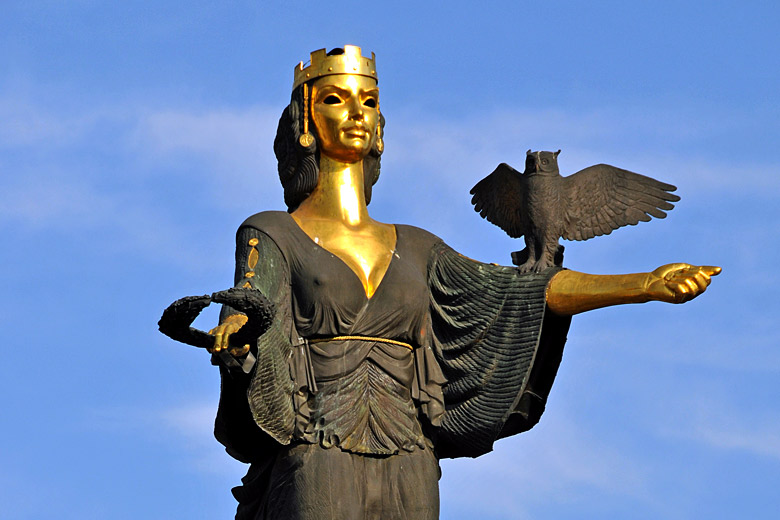
Other opinions swirl around the 8-metre-high statue. Her blank eyes make her a 'witch.' The barely perceptible bulge in her robes marks her as a hermaphrodite. Her owl, meant to symbolise wisdom, looks more like a raven, which is a symbol of death.
It's difficult to say what the sculptor, Georgi Chapkanov, might think of these opinions but it's probably useful to know that the statue was commissioned without public consultation at a time when the city was still grappling with the aftermath of Communism, including poverty, hyperinflation and poor infrastructure.
Eat your way around on a free food tour
Reservations are recommended for Balkan Bites' free (tipping is appreciated) daily food tours, just as you'd expect when the tour takes you on an informative trip through Sofia's culinary landscape AND provides samples along the way.
There's even a stop at a wine store. Groups meet in Park Crystal at 2 pm by the Stefan Stambolov statue, which is worth a look as it doesn't shy away from how this revered politician met his end at the hands of two assassins in 1895 (hint: its head has a marked split down it).
If food isn't your thing, the organisers of the food tour also host a pub crawl, which takes you to some of Sofia's off-radar watering holes, allowing you to meet new people and learn more about the history of these establishments.
This one's not free but the 35BGN (about £15) also covers you for several drinks. The meeting spot is at the same statue, 9 pm nightly.
Make a purchase at a 'klek' shop
One of Sofia's quirkier, and increasingly unusual, sights is that of the 'klek' shop. Translating roughly as "squat shops" owing to customers' need to squat or kneel to engage with the merchant, these stores hark back to the fall of Communism when people could first work, earn and trade independently, but often didn't have the means to do so.
Enterprising Sofians saw potential in their basements, opening these as stores from which they could sell cigarettes and drinks. In time, locals with skills used their 'kleks' as outlets for cobbling, mending and tailoring.
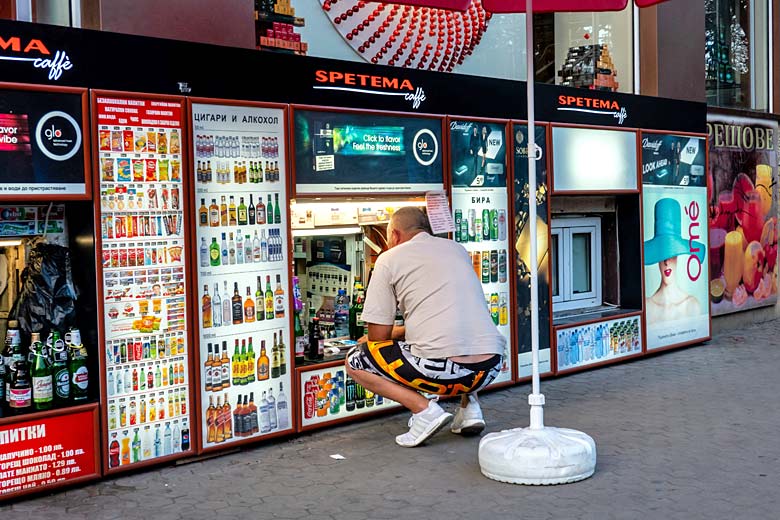
As the country continues to move further away from its 1989 break with Communism and towards its adoption of the Euro in 2025, kleks are increasingly being repurposed, often as bars and art spaces, so shopping at one needs to be experienced while it's still possible.
To see one of the best old-school examples of a 'klek' shop, go to the corner of Stefan Karadzha and Georgi S. Rakovski.
Get a taste of life under Communist rule
Many Soviet symbols have been, controversially or not, removed from Sofia since the 1989 fall of Communism. Even so, the ideology's place in the city's relatively recent history is still evident in some of the architecture, which features in many Soviet-style blocks.
As for the toppled icons, the Museum of Art from the Socialist Period features over 70 works of art in an outdoor area covering 7,500 sqm.
For a deeper dive into the city's time under Communist rule, join a walking tour, on which you'll be led by an experienced guide whose aim is to "present this controversial period of history in an objective and informative way."
The tour takes in the main landmarks of Communist rule; for instance, the Secret Police Investigation Facility. For a more day-to-day insight into life under Communism, visit The Red Flat.
It's like a time capsule, transporting you back to life in the 1980s and the experiences of a fictional family. Recordings offer details of their lives and you're welcome to handle the objects in their home.
Take a hike
Mountains form a scenic backdrop to Sofia, hence its popularity as a ski-holiday departure point, but the warmer months offer many opportunities for hiking and biking within easy reach of the centre.
Vitosha is so close that it's known as 'Sofia's back garden' and features several trails and waterfalls, making it ideal for a fresh-air day trip.
If you've arrived in Sofia without adequate footwear, head to Paradise Mall, which is near the Vitosha metro station. From here, you can catch Bus 66 to Hotel Moreni located near the mountain's summit. Glorious views over the surrounding landscape are almost guaranteed.
Shop at old-school markets
Given its location, directly in front of the St Alexander-Nevsky Cathedral, you're almost certain to find yourself in the flea market, and equally as certain to realise that the vendors have tourists in their sights. This doesn't make a visit any less worthwhile, but haggling is a must.
Table after table peddle masses of old coins, jewellery, musical instruments, nesting dolls, vintage cameras and religious icons, as well as hand-knitted socks and traditional rugs.
Located on Tsar Samuil, the Zhenski Pazar is Sofia's oldest, and commonly referred to as the 'Women's Market'. Here you'll find fresh fruit and vegetables plus meat and dairy products. If you're looking for something to take home, there's also traditional clothing, souvenirs, preserves and condiments.
Climate in Sofia
| Jan | Feb | Mar | Apr | May | Jun | Jul | Aug | Sep | Oct | Nov | Dec | |
|---|---|---|---|---|---|---|---|---|---|---|---|---|
| Maximum daytime temperature °C | ||||||||||||
| Hours of sunshine (daily) | ||||||||||||
| Days with some rainfall |
The above guide shows the climate in Sofia. Find out more about conditions across the country in our complete guide to the climate in Bulgaria.
Ready to explore Sofia? Don't miss the latest offers on escapes from easyJet holidays.
More about Sofia
- Overview
- Best time to visit
- Weather by month
- 5-day weather forecast
- Destinations
- Travel advice
- Deals & discounts
Sofia by month
Jan Feb Mar Apr May Jun Jul Aug Sep Oct Nov Dec
Explore holidays in the sun for less
- Beach holidays
- Family holidays
- City breaks
- Summer holidays
- Winter sun holidays
- Holiday offers
- Top travel brands
- Airlines & flights
- Discount hotels
- Airport parking deals
- TUI
- Jet2holidays
- easyJet holidays
- Love Holidays
- Black Friday sales
Airport parking
- Manchester Airport
- Stansted Airport
- Bristol Airport
- Luton Airport
- Birmingham Airport
- Edinburgh Airport
- Gatwick Airport
- Glasgow Airport
- Newcastle Airport
Airport lounges
- Manchester Airport
- Birmingham Airport
- Bristol Airport
- Edinburgh Airport
- Glasgow Airport
- Heathrow Airport
- Newcastle Airport
- Stansted Airport
- Gatwick Airport
Be inspired
Get your weekly fix of holiday inspiration from some of the world's best travel writers plus save on your next trip with the latest exclusive offers
We promise not to share your details

